If you’re a gardener puzzled by the problems plaguing your tomato plants, understanding common issues can help you to identify and address them effectively.
This blog provides insights into some of these challenges and practical solutions to keep your tomato plants healthy and productive!
Skip to section:
- 1. Blossom End Rot
- 2. Blight
- 3. Cold/Wind Exposure
- 4. Splitting & Catfacing
- 5. Other Nutrient Deficiencies
1. Blossom End Rot
Blossom end rot is a common issue in tomatoes and can also affect aubergines, peppers, and courgettes. The symptoms appear as dark, sunken patches at the base of the fruit. Although often mistaken for a disease, blossom end rot is a physiological disorder.
It results from a calcium shortage or poor calcium transport due to inconsistent watering. Calcium is crucial for plant cell function and water transport. Without adequate water, calcium movement is impaired, creating a cycle of deficiency.
Blossom end rot is particularly common in container-grown plants, as these often experience nutrient deficiencies and reduced water-holding capacity, especially when grown in peat-free composts. Pots also tend to dry out faster, exacerbating the issue.
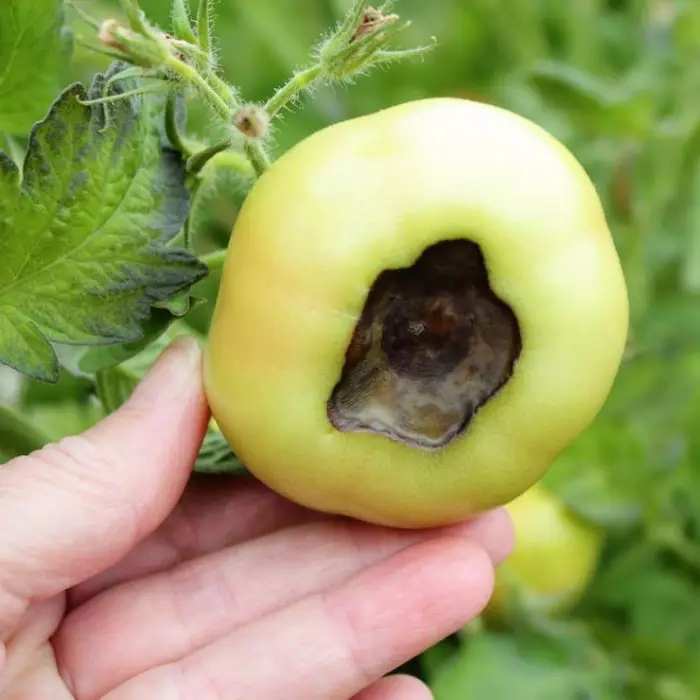
To combat this, using a specialized tomato feed such as Envii Maximato, which contains increased levels of calcium and plenty of potassium to support fruit development, can be highly beneficial. This type of feed is not only good for tomatoes but also for other greenhouse and fruiting crops.
Envii Maximato also contains seaweed, which has stress-relieving properties and can help plants manage environmental stresses such as drought or salinity. However, if you do notice a patch of rot, don’t panic—your entire crop isn’t lost.
By treating your plants weekly from the flowering stage and ensuring a consistent, deep watering schedule, you can keep them healthy and prevent future fruit from being affected. With a bit of extra care, your plants will be able to produce normal, healthy fruits.
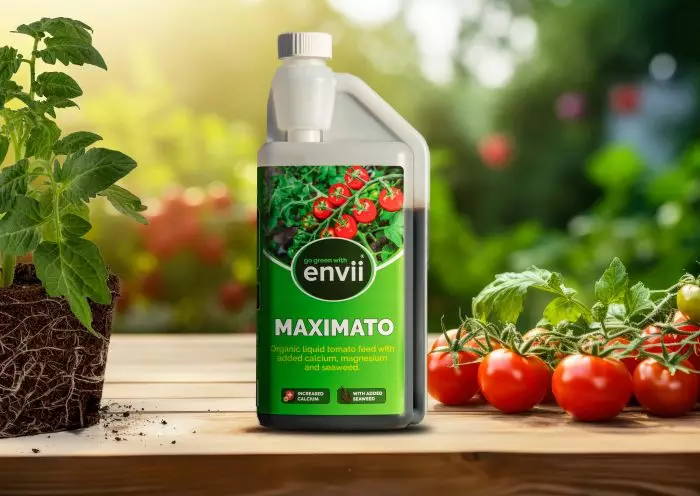
2. Blight
Blight is the true bane of late summer vegetable growing and often signals an inevitable end to the tomato growing season in many gardens.
Late blight, caused by a fungus-like organism (oomycete) known as Phytophthora infestans, spreads its spores through contaminated soil or via the wind. If left unchecked, it can lead to the total decay of both fruit and plants.
Early signs include dark patches on leaves, stems, or fruit, with outdoor tomatoes being particularly susceptible. Blight occurs when the spores come into contact with susceptible Solanaceae crops, such as tomatoes or potatoes.
Blight spreads rapidly in warm, humid conditions, making late summer a prime time for outbreaks. To prevent it, prune plants to improve airflow and dispose of infected material properly.
Composting may not kill the spores, so use green waste bins or burn them. Regularly check plants and remove affected leaves to slow blight development. Crop rotation and growing blight-resistant varieties can also help. Check out these varieties available from Suttons.
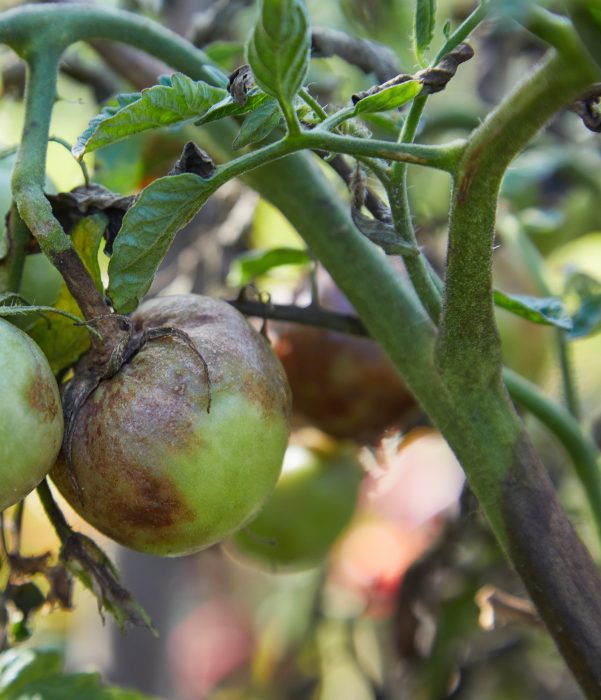
3. Cold/Wind Exposure
Cold and wind exposure can cause significant stress to tomato plants, leading to symptoms such as curled leaves and stunted growth.
The curling of leaves is a protective response where the plant reduces the surface area exposed to harsh conditions, which helps to minimize water loss and prevent physical damage.
This stress typically occurs when tomatoes face low temperatures or strong winds, conditions that are common in the early spring in the UK.
Starting tomatoes too early, as suggested on some seed packets, can be problematic without a heated greenhouse as the available sunlight and warmth are usually inadequate.
Sowing seeds later, around March, and moving plants outdoors in late April or May ensures they receive enough warmth and sunlight for healthy growth.
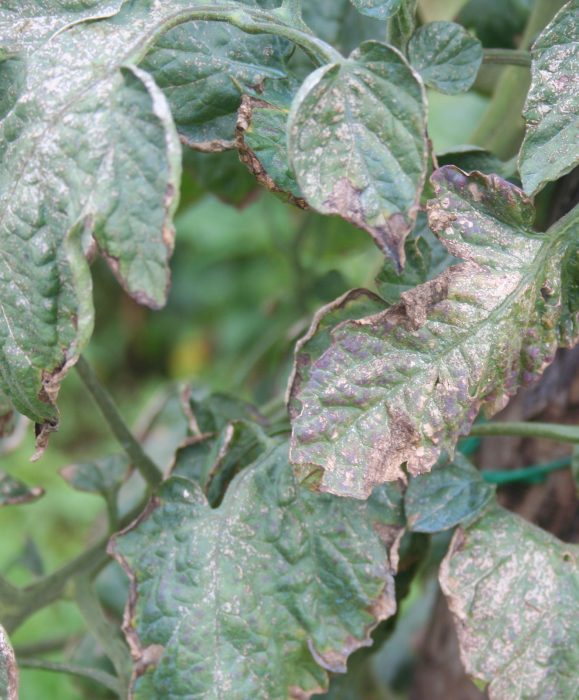
4. Splitting and Catfacing
Tomato splitting and catfacing are common issues that affect fruit quality. Splitting appears as cracks in the skin, often occurring after a dry spell followed by heavy watering.
This happens because the fruit absorbs water too quickly, causing internal tissues to expand faster than the skin can handle. To prevent splitting, maintain consistent soil moisture through regular, even watering and use mulch to retain moisture.
Catfacing, on the other hand, results in misshapen fruit with deep scars or outgrowths, usually at the blossom end. This condition is mainly caused by extreme temperatures during flowering and fruit-setting, though poor pollination and nutrient imbalances can also play a role. Some varieties also produce these fruits as a desirable characteristic.
To address this problem, try to ensure consistent pollination, try to shield plants from lower temperatures and manage nutrients appropriately. Choosing varieties less prone to these issues can also improve fruit quality.
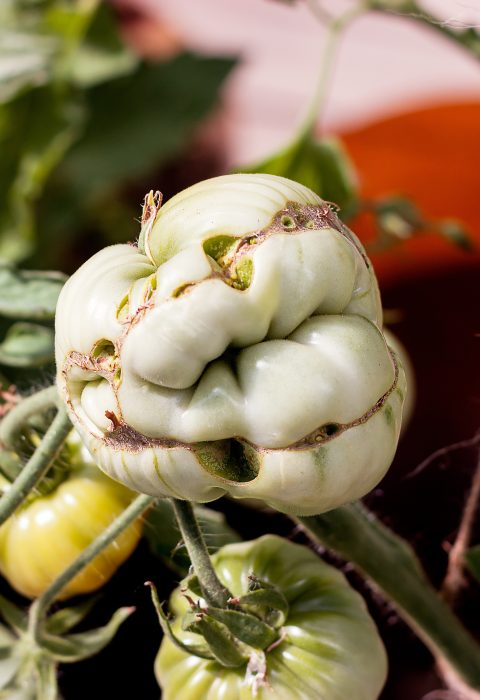
5. Other Nutrient Deficiencies
Tomato plants can exhibit various nutrient deficiencies, each affecting their growth and productivity:
- Nitrogen – causes yellowing of older leaves and stunted growth
- Phosphorus – often results in dark green or purplish foliage and poor fruit development
- Potassium – characterized by yellowing and browning of leaf edges, weak stems, and diminished fruit quality
- Magnesium – leads to interveinal chlorosis, where the spaces between leaf veins turn yellow
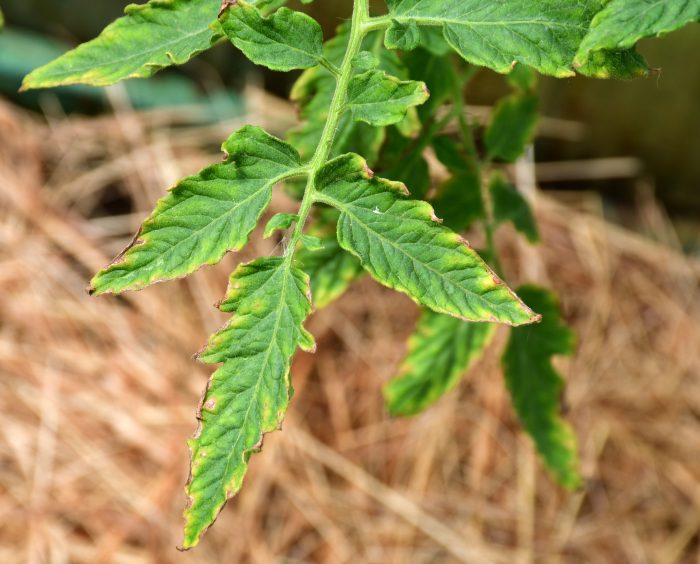
To prevent these issues, treat younger tomato plants with Maximato Xtra, which contains beneficial bacteria to help establish strong root systems for better nutrient uptake along with seaweed to provide slow-release nutrients, ensuring that plants have a steady supply of essential elements and reducing the risk of deficiencies from the start.
For more mature plants, treat with our liquid tomato feed, Maximato to facilitate rapid growth and effective nourishment. Read more about diseases affecting other plants in our blog Common plant diseases: The ultimate gardeners guide.
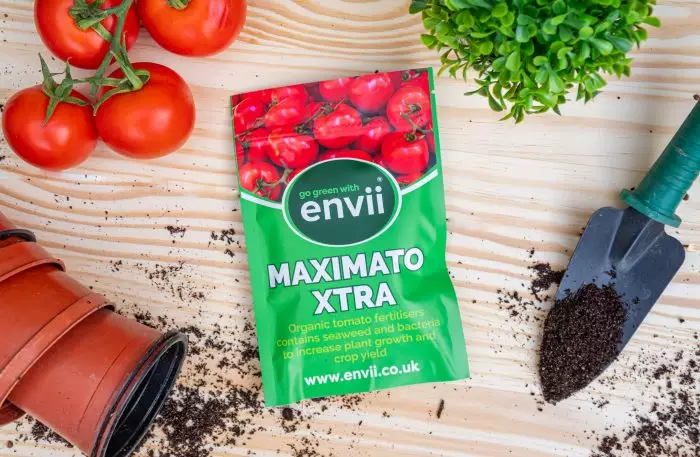
Summary
For more detailed advice on growing tomatoes successfully, check out our comprehensive tomato growing blog Tomato Plant Care: A Gardener’s Guide. If you have any concerns or need additional support, don’t hesitate to get in touch with our customer service team. Maximato and Maximato Xtra are available to purchase on our website.
How To Grow And Care For Tomatoes
Related Products
-
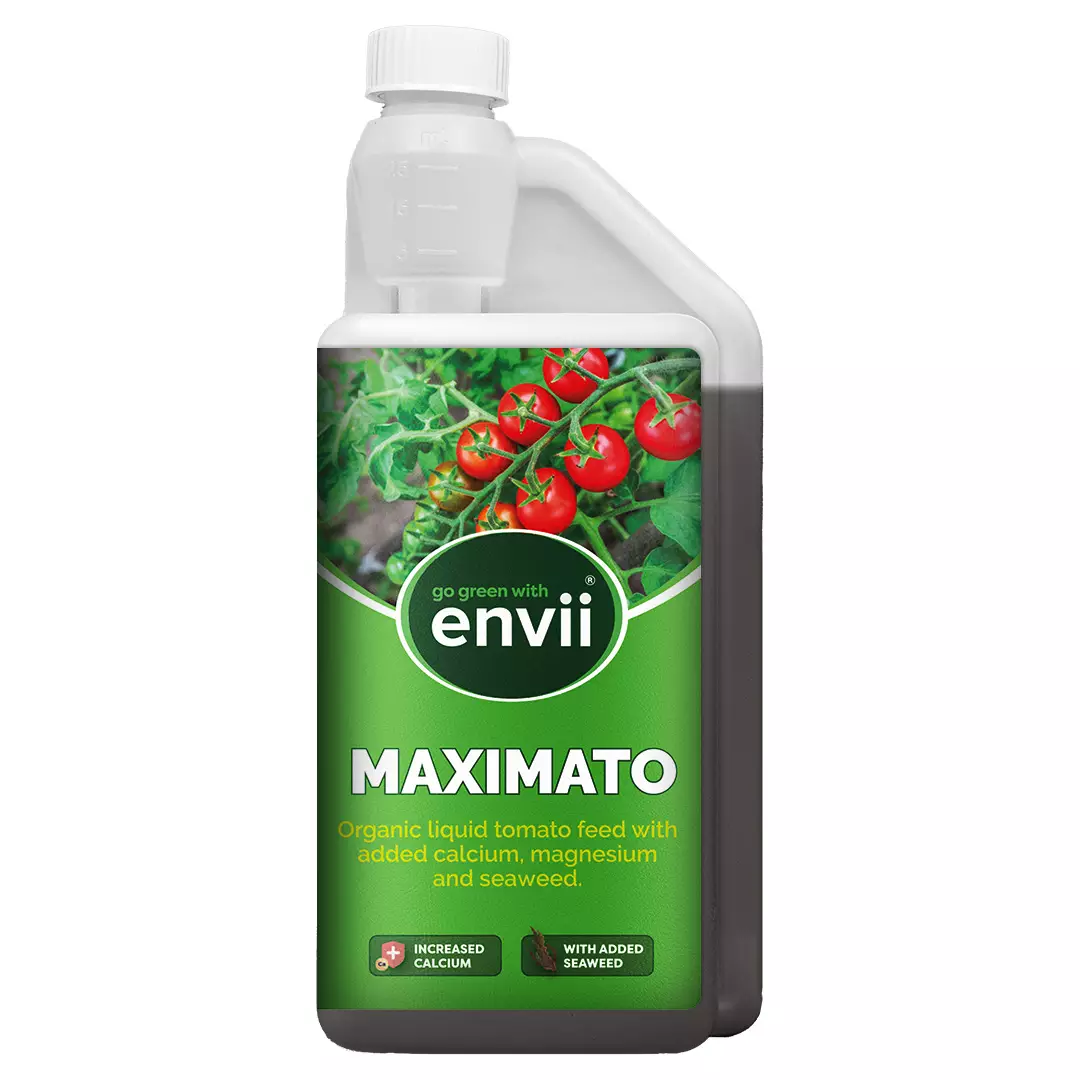 New in
New in
Envii Maximato
£10.99Organic liquid tomato plant feed with added seaweed, calcium and magnesiumAdd to Basket -
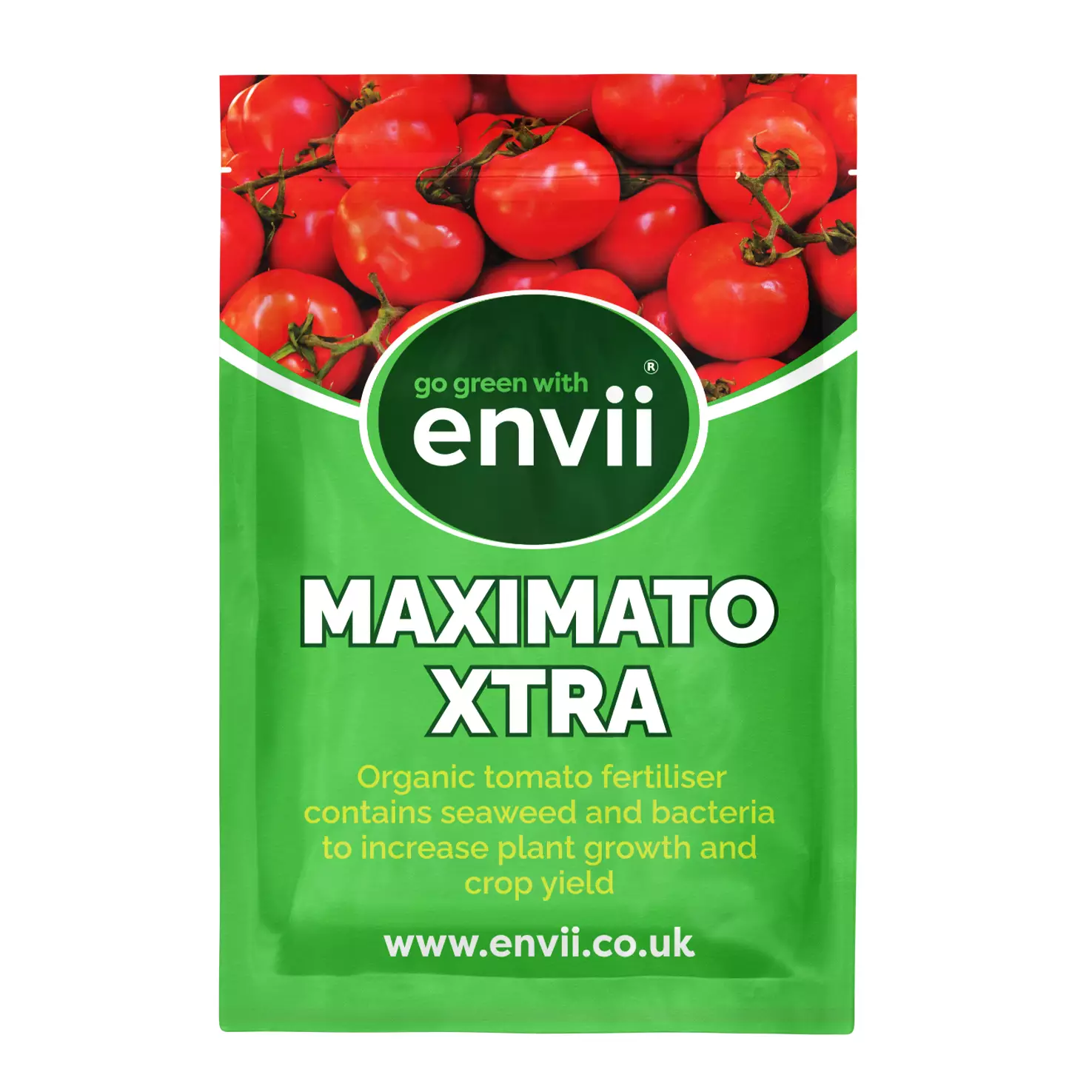
Envii Maximato Xtra
£8.99Organic tomato feed produces xtra crops, flavour, and size.Add to Basket

 Call us on 01246 240880
Call us on 01246 240880 Free 48hr Delivery
Free 48hr Delivery Sign-up and receive 10% off
Sign-up and receive 10% off